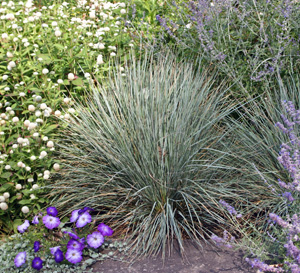
Blue fescue (Festuca ovina glauca), also commonly called sheep fescue and sometimes mistakenly classified as F. cinerea, is a small semi-evergreen grass native to Europe. Grown as an ornamental for its attractive foliage color, it is hardy in zones 4-8. Fescues are cool season grasses so they look their best in spring and fall.
The foliage of this species is a light blue-silver early in the season, turning to more blue-green in the summer. In fall, it turns a darker mottled green. In mild climates, it will remain evergreen
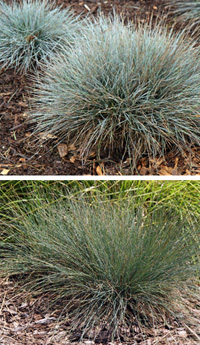
through the winter but may turn brown in harsher winters. The linear leaves, up to 10″ long, radiate outward from the crown to form a dense clump of foliage with a very fine texture. The clumps grow 10-12 inches high with a similar spread, only very slowly expanding outward. Even in the snow the foliage remains mostly upright, providing winter interest.
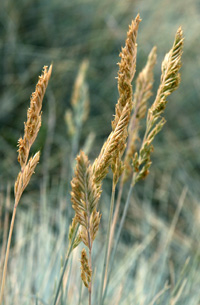
In early summer, airy inflorescences develop, growing above the foliage to 14-18″ tall. The light green flowers with a purple tinge occur in terminal panicles that eventually turn a buff color. These wispy flower spikes are not highly ornamental and the stalks can be sheared off if desired to improve the appearance of the plant. If the flower spikes are not deadheaded, brown seed heads will form. It easily self-sows and can become weedy.
Blue fescue can be used as a specimen plant or in a mass planting and makes a good filler plant as it is not as showy as some other grasses. It can be grown in beds and borders mixed with herbaceous perennials, as an edging plant,
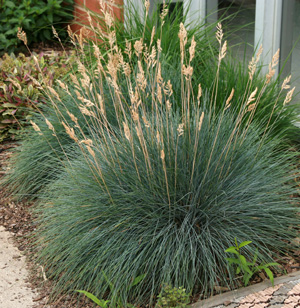
in the rock garden among stones or boulders or even in rain gardens. It can be used in containers or troughs to provide a vertical element. Because this is a clumping grass that will not get much larger with age, it should be planted densely (8-10″ apart) if used as a ground cover. The blue color blends well with cool-colored flowers and softens brightly colored flowers.
Blue fescue grows best in full sun, preferring moist, well-drained soil but is tolerant of a wide range of conditions. The blue color will not develop as well in partial shade, however. It can be short-lived in wet soils and in areas with high humidity and temperatures.
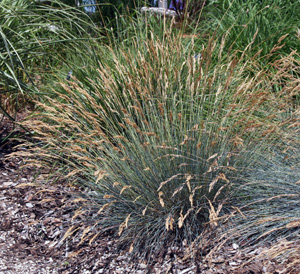
Plants should be sheared back in early spring to 3-4″ to allow the new growth to emerge (and to remove the unsightly dead foliage remaining after a harsh winter). As the clumps age, the center tends to become crowded and may die, so plants should be dug and divided every 2-3 years, discarding the centers and replanting the more vigorous portions.
It does not have any significant insect or disease problems and is tolerant of salt spray in the winter. Deer and rabbits may graze the foliage. It can be grown from seed (realizing that there is a lot of variation in coloration in seed-grown plants), or from clump divisions taken in early spring.
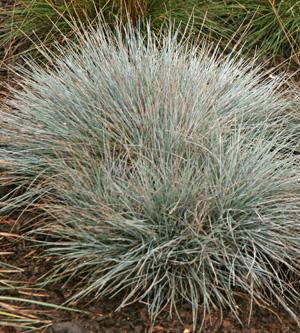
There are a number cultivars of this species, although some are not widely available. ‘Elijah Blue’ is the most common one offered, although there are actually several strains marketed under this name which vary in the intensity and persistence of the blue color. This cultivar is supposed to have more silvery or sky-blue foliage in spring than the species, with the blue color persisting longer into the growing season. ‘Sea Urchin’ is a more compact selection with bright steel blue foliage, while ‘Boulder Blue’ is more stiff and upright than ‘Elijah Blue’ with slate blue leaves and more tolerant of heat and humidity.
– Susan Mahr, University of Wisconsin – Madison
Ask Your Gardening Question
If you’re unable to find the information you need, please submit your gardening question here:





 Alternatives to Lawn: Groundcovers
Alternatives to Lawn: Groundcovers Marigolds
Marigolds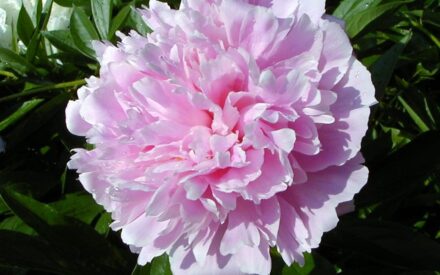 Peony
Peony Iris Severe Mosaic
Iris Severe Mosaic


